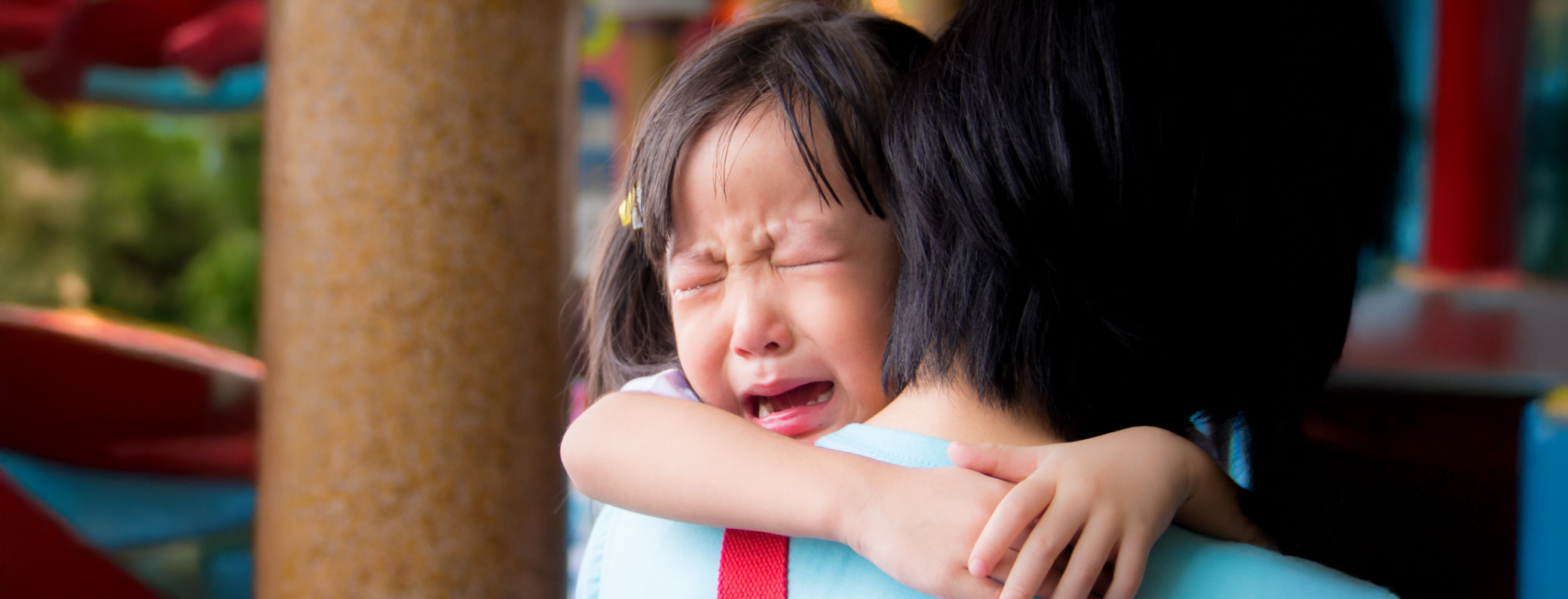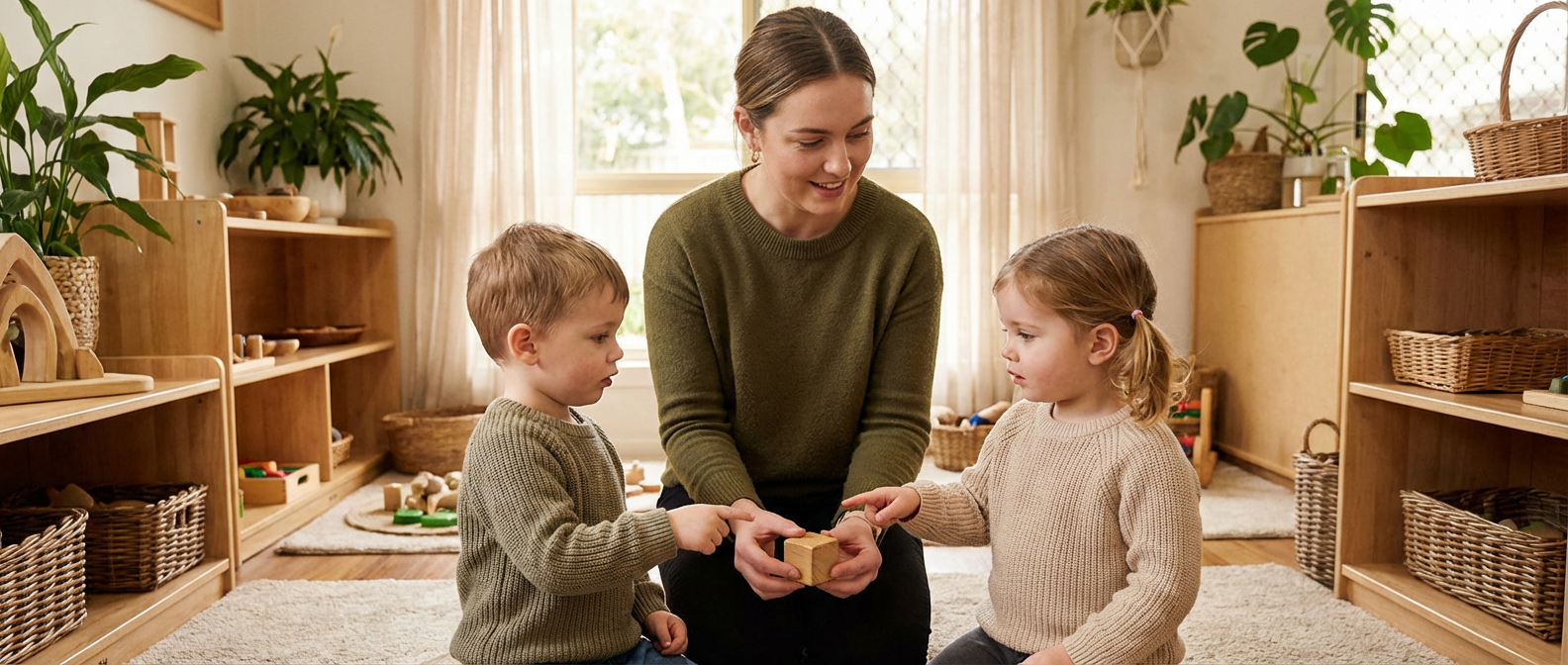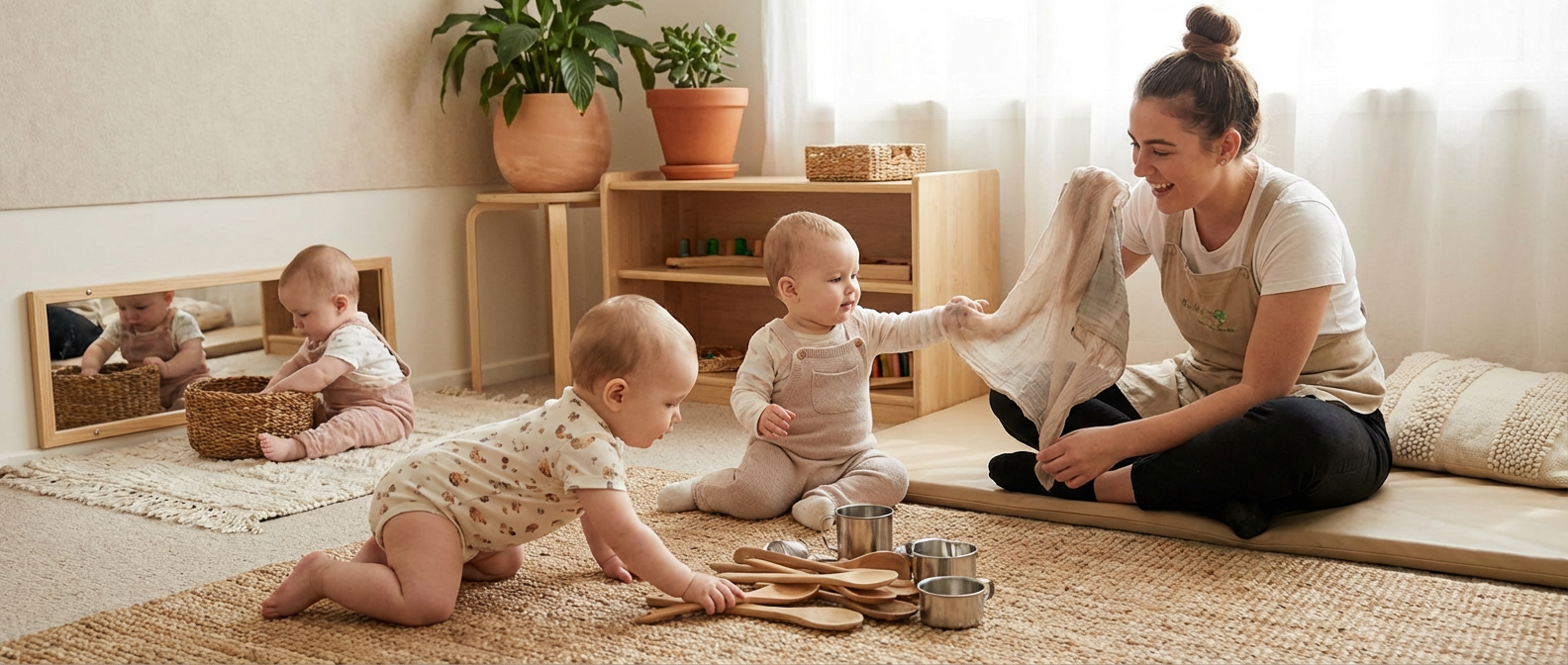Separation anxiety is one of the most common challenges children may face in the early years. For some, it may appear as a tearful goodbye during drop-off on their very first day, for others, it resurfaces after holidays, when routines change, or during times of change at home. For families, it can be heartbreaking to walk away from a crying child and for educators, it can feel like a balancing act, comforting the child, reassuring the parent, and keeping the rest of the classroom flowing smoothly.
The good news is that separation anxiety is a normal and healthy stage of development and it signals that children have formed strong attachments to their caregivers. Oftentimes, with the right support, children learn to manage their feelings, build resilience, and eventually transition into their new environment with confidence.
This article offers educators practical strategies, insights, and examples to guide children and families through separation anxiety with empathy and consistency.
Understanding Separation Anxiety in Early Childhood
Separation anxiety typically appears around six to eight months of age, peaks during toddlerhood, and can resurface again in preschool years. It often coincides with children developing a sense of “object permanence,” the understanding that people exist even when they’re not in sight. While this cognitive leap is exciting, it also means children worry about what happens when their parent or caregiver isn’t there.
In an early years classroom, separation anxiety might look like:
-
Clinging tightly to a parent and refusing to let go.
-
Crying or tantrums during drop-off.
-
Asking repeatedly when their parent will return.
-
Withdrawing from play or refusing to join activities.
-
Physical complaints like tummy aches at arrival times.
For educators, the key is to remember: this isn’t misbehavior, it’s communication. A child experiencing separation anxiety is telling you, “I need reassurance that I am safe.”
Why It Matters to Address Separation Anxiety
Some parents or educators may feel tempted to let children “cry it out.” But research shows that consistent, responsive support helps children feel secure and builds trust, not just with their caregivers, but also with their teachers.
When handled well, separation anxiety becomes an opportunity to:
-
Strengthen bonds with families: Parents feel more confident when they know educators understand and respond with care.
-
Build resilience in children: Children learn that big feelings are manageable and that they can trust adults to support them.
-
Create a calmer classroom: Supporting one child’s emotional needs helps reduce stress across the group.
-
Lay the foundation for learning: Children who feel safe and secure are better able to engage with peers and activities.
Strategies to Support Children Through Separation Anxiety
Every child is different, but these approaches are consistently effective in helping children transition more smoothly.
1. Create Predictable Routines
Predictability helps children feel secure. Greeting children warmly each day, following the same drop-off process, and using consistent rituals can ease anxiety. Some educators create a “goodbye window” where parents wave before leaving, or a daily morning song that signals the start of the school day.
Tip: Visual schedules on the wall can reassure children about what happens next, story time, snack, play, home time, making the day feel less uncertain.
2. Build Strong, Trusting Relationships
Children cope with separation better when they trust their teachers. Take time to form personal connections with each child, learn their favorite activities, comfort them when they’re upset, and celebrate their successes. Even five minutes of focused one-on-one time can reassure a child that you are a safe base.
3. Comfort First, Encourage Second
Some children need physical reassurance, a cuddle, a hand to hold, or simply sitting beside an educator until they’re ready to join in. Others may prefer quiet encouragement from a distance. Avoid pressuring children to join activities right away; instead, meet them where they are and support them in taking small steps forward.
4. Use Transitional Objects
Allow children to bring a comfort item from home, a family photo, a favorite toy, or even a parent’s scarf. These objects act as bridges between home and school, reminding children that their caregiver will return.
5. Collaborate With Families
Parents often feel just as anxious as their children. Partnering with families makes the process smoother. Encourage them to keep goodbyes short, calm, and consistent, even if it feels difficult. Share strategies you use in the classroom and reassure them with regular updates.
Tip: Sending a quick message or photo through Parent App once a child has settled can ease parental worries and build trust.
6. Create Calm Arrival Activities
Having engaging but low-pressure activities ready at drop-off, like playdough, puzzles, or a book corner, can help distract and comfort children. Rituals such as a “morning job” (putting away a backpack, choosing a sticker, or feeding the class pet) can also give children a sense of purpose and control.
7. Celebrate Progress, No Matter How Small
Every time a child manages a smoother goodbye, whether it’s less crying, quicker settling, or engaging in play sooner, acknowledge their bravery. Share these wins with families so they can celebrate too. Over time, these small victories build resilience and confidence.
Types of Separation Anxiety
Not all separation anxiety looks the same. Understanding the different ways it can show up helps educators respond effectively.
-
Separation anxiety: Tearful goodbyes, clinging, or resistance at drop-off.
-
Delayed anxiety: A child seems fine at first but becomes upset 20 minutes later when they notice their parent is gone. They also may be fine for the first week, and then start showing signs of resistance.
-
Situational anxiety: A child is generally settled but struggles after holidays, illness, or changes at home.
-
Persistent anxiety: A longer-term pattern where separation struggles continue for weeks or months.
Knowing which type of anxiety a child is experiencing helps educators validate, support and tailor their approaches.
Common Mistakes Educators Make (and How to Avoid Them)
Even well-intentioned teachers sometimes fall into patterns that make separation harder. Here are some pitfalls to avoid:
-
Rushing goodbyes: Quickly pulling a child away from a parent may increase distress. Instead, support short but calm farewells.
-
Minimizing feelings: Telling children “You’re fine” can make them feel unheard. Try “I can see you’re sad. Let’s sit together until you feel ready.”
-
Over-focus: While supporting anxious children, don’t forget to balance attention across the classroom, what helps here is team-based observation and group activities.
-
Inconsistent responses: If one teacher comforts while another insists on independence, children become confused. Consistency among staff is key.
Avoiding these mistakes keeps both children and families feeling supported.
Supporting Families Through the Process
Separation anxiety impacts parents too. Many feel guilt, worry, or even embarrassment when their child struggles at drop-off. Educators can help by:
-
Normalizing the experience: Remind families that separation anxiety is common and developmentally normal.
-
Sharing strategies: Suggest simple strategies that parents can try at home like practicing short separations, or role play situations like school drop-offs.
-
Offering reassurance: Send a message through Parent App once the child has settled, so parents don’t spend the whole day worrying.
-
Highlighting progress: Share positive observations about how the child is adjusting over time.
When parents feel supported, they model calm confidence for their child, making separation easier for everyone.
How Technology Helps
Managing separation anxiety can be emotional for both children and parents, but digital tools can ease the process. With Parent App, educators can:
-
Send photos or updates once a child has settled.
-
Track patterns of separation over weeks, helping identify progress.
-
Share daily reports that highlight positive moments.
-
Create a communication bridge so parents feel included without lingering at the door.
These small touches reassure families, lighten educators’ workload, and help children feel more secure.
In Daily Practice
Supporting children through separation anxiety doesn’t mean eliminating tears altogether, it means creating an environment where those feelings are met with empathy and consistency. In practice, that may look like, having a calm, predictable drop-off routine, offering comfort without pressure, building strong bonds with children and families, celebrating progress and resilience over time or using tools to communicate openly with parents.
When educators approach separation anxiety as a normal stage of development rather than a problem to “fix,” children learn an invaluable lesson: that their feelings are valid, and that trusted adults will always support them.
Separation Anxiety is a Sign of Healthy Attachment
Separation anxiety can feel challenging in the moment, but it’s also a sign of healthy attachment and an opportunity to strengthen trust between children, families, and educators. With patience, empathy, and consistent strategies, teachers can turn difficult drop-offs into meaningful growth moments.
For children, overcoming separation anxiety builds confidence and resilience that extend far beyond the classroom walls. For families, it deepens the bond of trust they place in educators. And for teachers, it reinforces the heart of early years education: creating safe, supportive spaces where children can learn, grow, and feel truly at home.
Interested in seeing how Parent can support you and your centre?
Let’s talk. Book a quick, no obligation, walkthrough with our team
If you found this post helpful, explore our free webinars, activity library, and newsletter for more support in your early years journey.
Billing, Invoicing Automation & Smart Finances
Communication & Engagement
Child Development & Progress
Waitlist, Forms & Attendance
Effortless Team Management
Daily Updates That Matter
Templates & Printables
Blogs
Webinars
Case Studies & Testimonials
FAQs
Help Center


.png)

